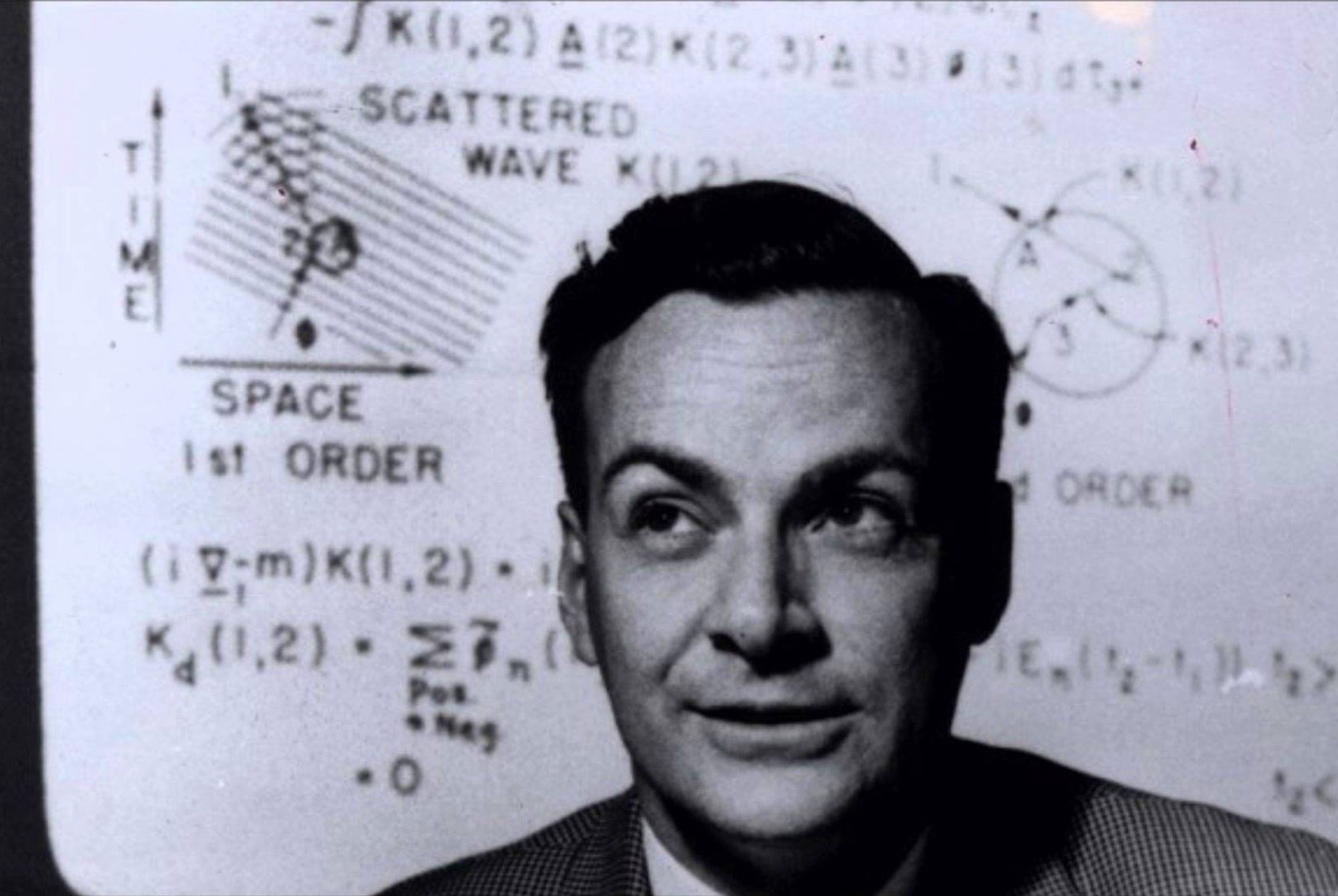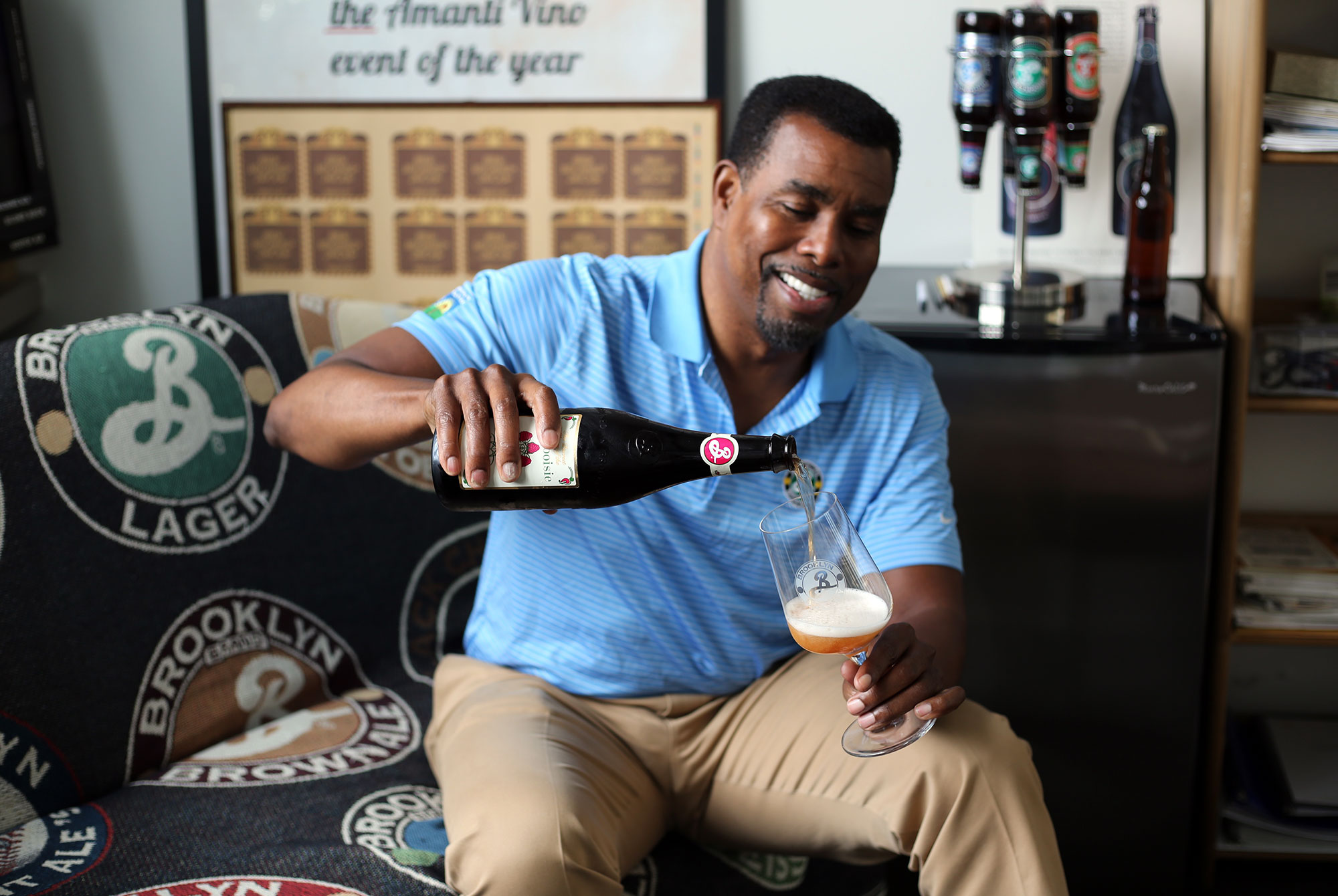Shop
Cheers to Science: Richard Feynman
In our "Cheers to Science" series, we recognize an extraordinary scientist by pairing him/her with an extraordinary beer.
Richard Feynman was one of the most entertaining personalities in all of science. He was also one of the most brilliant. Hero to physics majors? None better.
Feynman was a prankster, ladies’ man, and a straight-talking regular joe. But most importantly, he was an adept explainer and teacher of complex physics. If you want a good picture of him, and a hoot of a read, check out his unique memoir Surely You’re Joking, Mr. Feynman!
Born in 1918 to secular Jewish parents in Rockaway Beach, Queens, Feynman was heavily influenced by his father, a uniform salesman. Although Melville Feynman was not particularly educated, the Feynman family didn’t have any slouches: Melville taught his son important lessons about conveying difficult concepts in relatable ways, and Feynman credited his famous sense of humor to his mother. Feynman’s younger sister, Joan, went on to be an astrophysicist.
As a five-year-old, Feynman fixed radios for neighborhood adults.
“He fixes things with his mind!,” exclaimed one neighbor, since Feynman would sit for many minutes before fiddling with the electronics, imagining the current running through the circuitry, trying to imagine where it was broken.
Before college, he derived advanced mathematical concepts using notation of his own design. He applied to Columbia but was rejected due to their “Jewish quota.” Instead he attended MIT, where he published two papers as an undergrad before heading off to Princeton for graduate school. Again, he was almost rejected for being Jewish, and would have been if not for the his advisors’ recommendations.
At Princeton, Feynman worked with John Wheeler on quantum electrodynamics, setting the foundation for the work that would eventually win him the Nobel. At this point, he was one of the smartest 23-year-olds in the country, if not the world, and had a more native and intuitive grasp of physics than anyone else, perhaps save for Einstein and Lev Landau. In 1941, the US entered WWII, and Feynman spent the summer working on military projects. A year later, he’d earn his PhD, and in 1943 he was recruited to join the Manhattan Project and went to Los Alamos to work on the atomic bomb.
In Los Alamos, Feynman was assigned to Hans Bethe’s theoretical division, where he made enough of an impression to become a team leader. He was also sought out for one-on-one discussions with Niels Bohr, as most of the other physicists were too in awe of Bohr to have honest discussions and disagreements about physics. Feynman had no such inhibitions. He had a bunch of good stories from Los Alamos, including one in which he became a proficient enough lockpick to break into safes with US military secrets (one of the pranks he relates in Surely You’re Joking, Mr. Feynman!).
After the war, he took a position at Cornell, where he had trouble focusing on research questions due to depression after the loss of his wife Arline, who died from tuberculosis. With his research stalled, he got back into solving physics problems for fun, rather than utility. One famous example was that of a spinning and nutating disk, which he cracked after seeing someone throw a dinner plate in the Cornell cafeteria. He claimed this inspired him to work with equations of rotations when thinking about electron spin—ultimately proving useful to his Nobel Prize-winning work in quantum electrodynamics.
But Feynman grew restless at Cornell and took a position with Caltech, which offered him the opportunity to spend his first year on sabbatical in Brazil. Feynman was fond of samba music and learned to play the frigideira, drawing on his experience playing bongos. When Feynman got to Caltech, he developed the undergrad physics program, which shied away from rote learning and unthinking memorization. Instead, his goals were clarity and deep understanding.
In 1965, Feynman won the Nobel Prize in Physics (along with Julian Schwinger and Sin’ichirō Tomonaga) for “their fundamental work in quantum electrodynamics, with deep-ploughing consequences for the physics of elementary particles.”
Feynman also played an important role in the Challenger disaster investigation as part of the Rogers Commission. During a televised hearing, Feynman demonstrated that the material used in the shuttle’s O-rings became less resilient in cold weather by compressing a sample of the material in a clamp and immersing it in ice-cold water. The commission ultimately corroborated his hypothesis. After the hearing, Feynman expressed disappointment in the NASA administration for valuing public relations over the knowledge of their engineers.
In 1988, Feynman died from cancer at the age of 69. To him, we raise a Ninkasi Ground Control, an imperial stout brewed with Oregon hazelnuts, star anise, cocoa nibs, Apollo and Comet hops, and—here’s the kicker—yeast that went into space on UP Aerospace’s SpaceLoft-9 rocket. Like Feynman, Ground Control is fun, interesting, and makes for one hell of a good story. And, you know, space.
Here’s to you, Richard Feynman.



